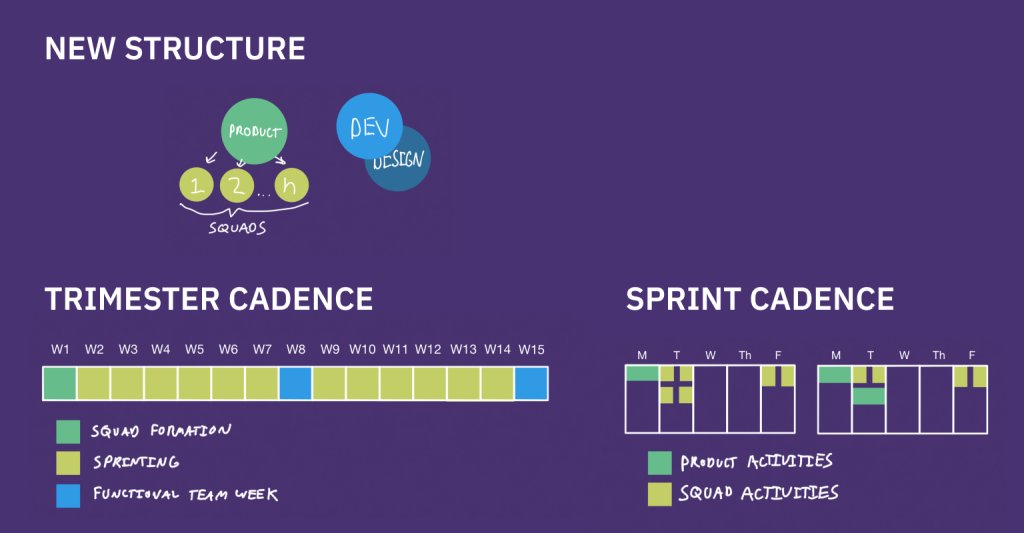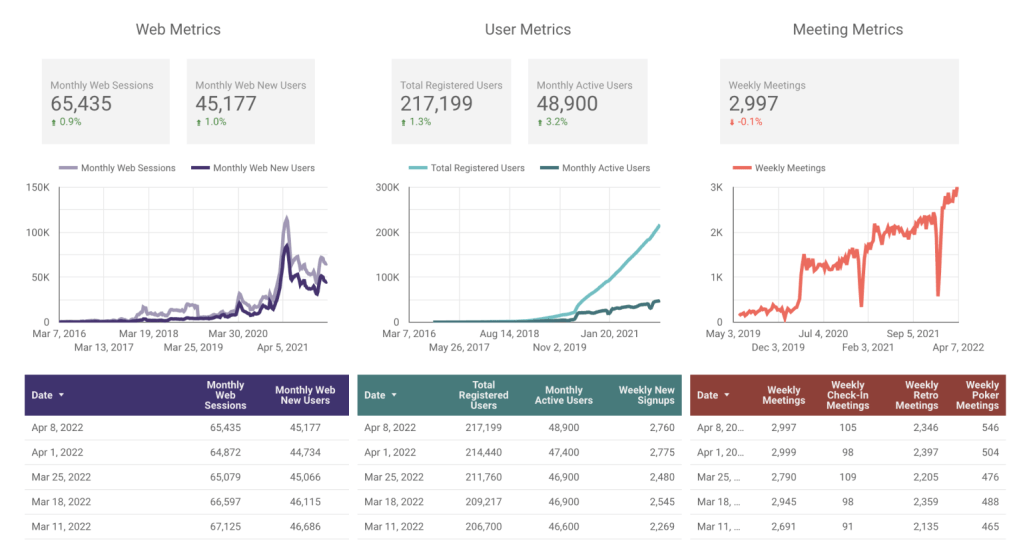#294 – Forming Development Squads
April 8, 2022

This week, Parabol’s Product team began operating in smaller development squads.
Last month, our weekly Product Check-In meeting grew to have more than 20 attendees—partially due to new hires and new outside collaborators (more on that in a future post). Passing 20 folks on the Product team felt like a milestone, but it also meant that our limited team meetings could leave folks wanting – somebody’s need or contribution could be overlooked for lack of time. The time had come to divide into smaller working groups.
Our structure and cadence before forming product development squads was simple. There was just one team with attendees attending up to 3 meetings per week, operating in 2-week sprint cycles:

Principles for forming product development squads
When considering how we’d create smaller teams, there were a few principals that guided our organization design:
- S.L.A.M. – teams should be Small, Lean, Autonomous, and Multidisciplinary so their members develop tight relationships with each other and pursue their missions freely without waiting on others
- Minimize required meetings – Parabol is fully-remote and distributed across many time zones, by requiring few meetings we maximize focus time without needing too much calendar overlap
- Self-forming – individuals should be able to select what team they want to join so folks may pursue the work that’s most interesting to them
- Ephemeral – team composition & mission should be able to change as the needs of the business change, however, teams should also be stable for a time so they can develop norms and strong working relationships
Parabol’s Squad Model
To strike a balance between reforming teams to respond to changing needs and providing stability to members, we decided on a 4-month cadence we call a trimester. Within a trimester there are 3 phases:
- Squad Formation – in the first week of the trimester, we identify what needs to get done, form squads with charters, have folks self-select into their desired squads and elect their Squad leaders
- Sprinting – we sprint 3 times, 2 weeks per sprint
- Free Weeks – at the end of 3 sprints, we halt sprinting and let folks do whatever they wish. Following a Free Week, sprinting resumes
Our new structure and cadence looks like this:

To help facilitate connectivity between squads, a team is created comprised of the Head of Product Development, Product Manager, Head of Growth, development, design, and DevOps, and Squad leads. This team checks in for 30 minutes once per week to clear any Squad collaboration issues. During the free week between sprints, we leave room to scheduled ad hoc activities like all-Squad retrospectives or design or architecture sprints, or other things that might be best pursued by members from various squads working together.
Testing and Learning
We share this model not because we believe it to be good or definitive, we’re just experimenting! We’re sure it will continue to evolve as our company continues to evolve. We’d love to hear from you how your model might differ from ours, what other models you’re inspired by, or what additional detail on our own development operations we might share. Hit write to us here or Tweet @ us!
Metrics

This week maintained last week’s sift new user registration rate while also see gains in our top-of-funnel metrics.
This week we…
…shipped v6.53.0 to production. Many behind-the-scenes changes were shipped this week to support upcoming new integration and meeting type enhancements. One small feature we tucked into this release is we now remember which integration users used last to save them a click importing backlog items when conducting repeat Sprint Poker sessions.
…published a post on becoming an Agile Coach. We interviewed several agile coaches to compile what we hope to be the definitive guide on how to get a start as an agile coach.
…sourced and interviewed for several of our open roles.
Next week we’ll…
…hold an in-person executive retreat. Our 6-person executive leadership team will gather in New Orleans for our once-a-trimester retreat where we’ll discuss strategy and planning for our next 4 month cycle that begins in May.
